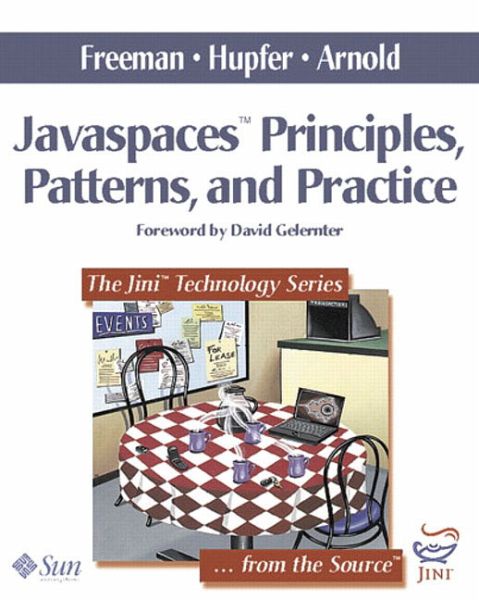
JavaSpaces
Principles, Patterns, and Practice. Foreword by David Gelernter
Versandkostenfrei!
Nicht lieferbar
Ever since I first saw David Gelernter's Linda programming language almost twenty years ago, I felt that the basic ideas of Linda could be used to make an important advance in the ease of distributed and parallel programming. As part of the fruits of Sun's Jini project, we now have the JavaSpaces technology, a wonderfully simple platform for developing distributed applications that takes advantage of the power of the Java programming language. This important book and its many examples will help you learn about distributed and parallel programming. I highly recommend it to students, programmers...
Ever since I first saw David Gelernter's Linda programming language almost twenty years ago, I felt that the basic ideas of Linda could be used to make an important advance in the ease of distributed and parallel programming. As part of the fruits of Sun's Jini project, we now have the JavaSpaces technology, a wonderfully simple platform for developing distributed applications that takes advantage of the power of the Java programming language. This important book and its many examples will help you learn about distributed and parallel programming. I highly recommend it to students, programmers, and the technically curious. Bill Joy , Chief Scientist and co-founder, Sun Microsystems, Inc.
JavaSpaces technology, a powerful Jini service from Sun Microsystems, facilitates building distributed applications for the Internet and Intranets. The JavaSpaces model involves persistent object exchange areas in which remote processes can coordinate their actions and exchange data. It providesa necessary ubiquitous, cross-platform framework for distributed computing, emerging as a key technology in this expanding field.
This book introduces the JavaSpaces architecture, provides a definitive and comprehensive description of the model, and demonstrates how to use it to develop distributed computing applications. The book presents an overview of the JavaSpaces design and walks you through the basics, demonstrating key features through examples. Every aspect of JavaSpaces programming is examined in depth: entries, distributed data structures, synchronization, communication, application patterns, leases, distributed events, and transactions.
You will find information on such vital topics as:
Distributed data structures
Synchronization techniques
Loosely coupled communication
Message passing
Channel data structures for communication
Application patterns such as replicated worker, command pattern, and marketplace
Leases and automated lease renewal
Using distributedevents with spaces
Handling partial failure with distributed transactions
The official JavaSpaces specification from Sun Microsystems
JavaSpaces Principles, Patterns, and Practice also includes two full-scale applications--one collaborative and the other parallel--that demonstrate how to put the JavaSpaces model to work.
0201309556B04062001
JavaSpaces technology, a powerful Jini service from Sun Microsystems, facilitates building distributed applications for the Internet and Intranets. The JavaSpaces model involves persistent object exchange areas in which remote processes can coordinate their actions and exchange data. It providesa necessary ubiquitous, cross-platform framework for distributed computing, emerging as a key technology in this expanding field.
This book introduces the JavaSpaces architecture, provides a definitive and comprehensive description of the model, and demonstrates how to use it to develop distributed computing applications. The book presents an overview of the JavaSpaces design and walks you through the basics, demonstrating key features through examples. Every aspect of JavaSpaces programming is examined in depth: entries, distributed data structures, synchronization, communication, application patterns, leases, distributed events, and transactions.
You will find information on such vital topics as:
Distributed data structures
Synchronization techniques
Loosely coupled communication
Message passing
Channel data structures for communication
Application patterns such as replicated worker, command pattern, and marketplace
Leases and automated lease renewal
Using distributedevents with spaces
Handling partial failure with distributed transactions
The official JavaSpaces specification from Sun Microsystems
JavaSpaces Principles, Patterns, and Practice also includes two full-scale applications--one collaborative and the other parallel--that demonstrate how to put the JavaSpaces model to work.
0201309556B04062001



